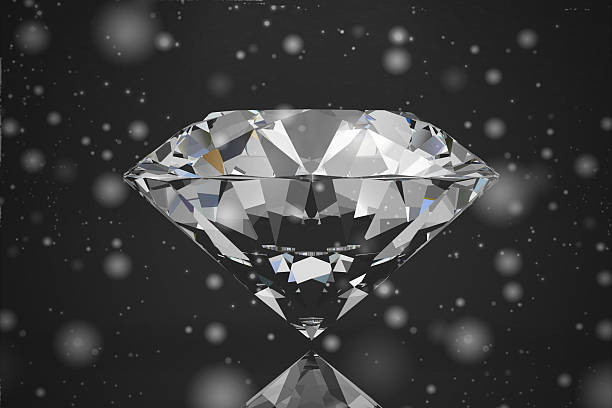Are Lab-Grown Diamonds Worth Buying?
Lab-grown diamonds have emerged as a game-changer in the jewelry industry, offering an ethical, affordable, and sustainable alternative to traditionally mined diamonds. But are they truly worth buying? In this in-depth guide, we’ll explore everything you need to know about lab-grown diamonds, their benefits, quality, purchasing considerations, and future prospects.
What Are Lab-Grown Diamonds?
Lab-grown diamonds are real diamonds created in a controlled laboratory environment using advanced technology. Unlike cubic zirconia or moissanite, which are diamond alternatives, lab-grown diamonds possess the same physical, chemical, and optical properties as natural diamonds.
These diamonds are formed under high pressure and temperature, mimicking the natural conditions found deep within the Earth. There are two primary methods used to create them:
- High Pressure High Temperature (HPHT): This method replicates the Earth’s diamond-forming process by subjecting carbon to extreme heat and pressure.
- Chemical Vapor Deposition (CVD): A more modern technique where a gas mixture containing carbon is heated, allowing diamond crystals to form layer by layer.
The result? A diamond that is indistinguishable from a mined diamond, with the same brilliance, hardness, and sparkle.
Benefits of Lab-Grown Diamonds
1. Affordability
One of the biggest advantages of lab-grown diamonds is their cost-effectiveness. On average, they are 30-40% more affordable than natural diamonds, allowing buyers to get a larger or higher-quality stone for the same budget.
2. Ethical Sourcing
Traditional diamond mining has long been associated with ethical concerns, including exploitative labor practices and conflict diamonds (also known as “blood diamonds”). Lab-grown diamonds eliminate these concerns, offering a guilt-free choice for conscious consumers.
3. Sustainability
Mining diamonds has a significant environmental impact, leading to land degradation, deforestation, and water pollution. Lab-grown diamonds, on the other hand, have a much lower ecological footprint, especially when produced using renewable energy.
4. High-Quality and Unique Beauty
Lab-grown diamonds undergo rigorous quality control, ensuring consistency and excellence. They come in a variety of cuts, colors, and clarities, making them a perfect choice for those seeking a unique and timeless piece of jewelry.
Characteristics and Quality of Lab-Grown Diamonds
Unique Characteristics of Lab-Grown Diamonds
Every lab-grown diamond is unique, just like its natural counterpart. Some may contain slight inclusions or variations in color due to the growth process, making each stone one-of-a-kind.
Certification and Quality Standards
Lab-grown diamonds are graded using the same strict standards as natural diamonds, following the 4Cs:
- Carat: The weight of the diamond.
- Color: Ranges from colorless to slight hues.
- Clarity: Measures internal and surface imperfections.
- Cut: Determines the diamond’s brilliance and sparkle.
Organizations like the Gemological Institute of America (GIA) and the International Gemological Institute (IGI) provide certification for lab-grown diamonds, ensuring their authenticity and quality.
Buying Lab-Grown Diamonds
Who Should Consider Buying Lab-Grown Diamonds?
Lab-grown diamonds are an excellent choice for:
- Budget-conscious shoppers who want a high-quality diamond without the hefty price tag.
- Ethical consumers looking for a conflict-free and sustainable jewelry option.
- Couples searching for a stunning engagement ring without overspending.
- Jewelry lovers who appreciate variety and customization.
How to Buy Lab-Grown Diamonds
To make the best purchase decision, follow these tips:
- Buy from Reputable Sellers – Choose trusted jewelers who provide certification from organizations like GIA or IGI.
- Understand the 4Cs – Ensure you know what quality aspects matter most to you.
- Compare Prices – Research the market to get the best value for your money.
- Check Return and Warranty Policies – Ensure flexibility in case you need exchanges or repairs.
Considerations and Concerns
1. Resale Value
One drawback of lab-grown diamonds is their lower resale value compared to natural diamonds. If investment potential is a major factor for you, this might be a point of concern.
2. Prestige and Perception
Some traditionalists still view natural diamonds as more prestigious due to their rarity and natural formation. However, this perception is gradually changing as lab-grown diamonds gain popularity and acceptance.
3. Energy Usage
While lab-grown diamonds are more eco-friendly than mined diamonds, their production still requires significant energy. However, many manufacturers are shifting toward renewable energy sources to minimize environmental impact.
The Future of Lab-Grown Diamonds
The demand for lab-grown diamonds is on the rise as more consumers prioritize ethics, affordability, and sustainability. Advancements in technology continue to improve the quality and efficiency of lab-grown diamond production, making them even more accessible and desirable.
As brands and designers embrace lab-grown diamonds, the variety of styles and customization options will expand, further cementing their place in the jewelry industry.
Conclusion
Lab-grown diamonds offer a compelling alternative to traditional diamonds, combining beauty, affordability, and ethical sourcing. Whether you’re looking for an engagement ring, elegant earrings, or a timeless necklace, lab-grown diamonds provide an exceptional and sustainable choice.
With increasing consumer demand and evolving technology, lab-grown diamonds are here to stay, making them a worthwhile investment for those who value luxury without compromise.
FAQs
1. What are lab-grown diamonds?
Lab-grown diamonds are real diamonds created in a controlled laboratory setting using advanced technology.
2. Are lab-grown diamonds real diamonds?
Yes, they have the same physical, chemical, and optical properties as natural diamonds.
3. How are lab-grown diamonds created?
They are made using two main methods: High Pressure High Temperature (HPHT) and Chemical Vapor Deposition (CVD).
4. What are the benefits of lab-grown diamonds?
Lab-grown diamonds are affordable, ethical, sustainable, and of high quality.
5. How do lab-grown diamonds compare to natural diamonds?
They are identical in appearance and quality but cost significantly less and have a lower environmental impact.
Lab-grown diamonds offer an exciting future for the jewelry industry—one that embraces sustainability, affordability, and luxury without compromise.




